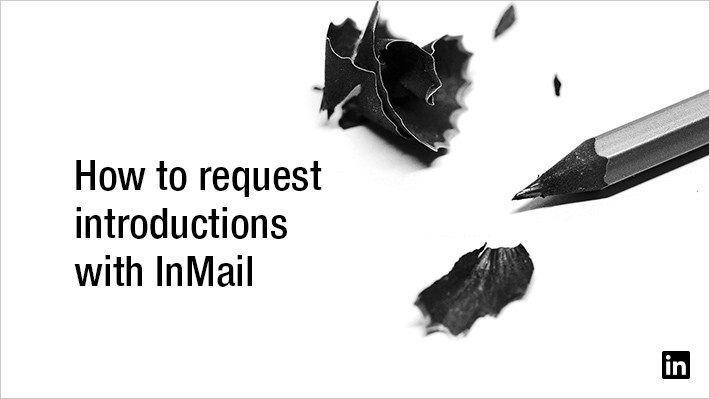How to Request an InMail Introduction Like a Boss
You may have heard this idiom: You’ll attract more bees with honey than vinegar.
In a broad sense, it means a polite, courteous approach to placing a request will get you closer to your goal than a demanding one. It’s a matter of empathy; we respond favorably when we feel understood. A friendly request suggests the person making the ask recognizes we’re doing them a kindness.
Few professionals have the time or interest to entertain frivolous favors, making impolite requests a definite turn-off. If you’re a seller interested in making the acquaintance of a prospective buyer through a mutual contact, LinkedIn InMail can be a direct yet non-intrusive means of brokering your request. It’s all in how you phrase it.
Why Use InMail to Request an Introduction?
LinkedIn InMail works just like regular email, enabling you to send and receive electronic messages. It has a subject line (200 characters) and a body area (2,000 characters). Plenty of room to get your point across without drowning the reader in information.
How does InMail stack up against email? For starters, InMail doesn’t require you to know someone’s email address in order to send a message. That’s super useful when you haven’t yet had the opportunity to exchange contact details. InMail messages also are generally delivered straight to the intended recipient, while email from an unknown sender can sometimes be inadvertently routed to spam or junk folders by the receiver’s corporate email software.
LinkedIn fosters a community of like-minded business professionals interested in furthering their career growth. InMail upholds the brand image, meaning as a communications channel, members have certain expectations for message content and user behavior. This etiquette standard means you can feel good about the quality of messages you might receive.
Below, we’ll help you do your part to send quality InMail messages that lead to productive engagements and new connections.
How to Request Introductions with InMail
There’s a certain art to asking a work acquaintance for help, isn’t there? In a business environment, your request should be issued in a way that the recipient is not only pleased to assist, but also mildly flattered you viewed them as instrumental to achieving your objectives. Here’s how you can help the person making the introduction, so they can better help you:
- Write to your connection using a warm yet professional tone. Message tone is how you’ll convey your personality and attitude. Make sure your words are perceived as positive and courteous, without feeling distant or stiff.
- Make your point quickly and clearly. Be sincere. We’ve all received gratuitous or self-serving messages before. The former is usually transparent, and the latter doesn’t inspire our help. Also, think about what the other person may need to know more about in order to consider your request.
- Be specific about the value or benefit your intended contact will receive from the introduction. Think along the lines of, what’s in it for them? Take a few moments to consider how you, or knowledge you have, might be useful to your contact. Could you give them a reciprocal hand with something in the coming weeks or months? Point out what you think your intended contact will gain from the introduction, too.
- Show your appreciation for your connection’s support. A genuine expression of thanks will go a long way toward making your connection feel good about their actions. We recommend expressing thanks within your request and also after the introduction is made, whether via LinkedIn or by sending a handwritten thank you note.
Template for an InMail Request for Introduction
Your mental wheels may be turning at the thought of all the warm-path opportunities sitting in your LinkedIn network. This InMail introduction request template might help you structure your outreach:
Hi [recipient’s name],
Warm professional intro that doesn’t drag. “It’s been a while since we’ve touched base but I hope things are going well at Acme. I got such a kick out of your blog post last month, I had to share it.”
Get quickly to the point and frame your request with a benefit. “I came across John Smith’s name and noticed he’s a connection of yours. I think there’s a good chance I can help his team at CompuCo cut down on operational costs with our CRM add-on because his company shares many of the same attributes of our most successful customers. Would you feel comfortable introducing me to John?”
Conclude with a thanks-in-advance. “Thank you for considering. If there’s anything I can help you out with, please don’t hesitate to let me know.”
B2B sales is a referral business. By using LinkedIn InMail to request introductions, you can continually capitalize on the power of your network to keep your sales pipeline full.
Get a jump on your sales prospecting efforts this year when you download our new eBook, Read Me If You Want to Target the Right Prospects on LinkedIn.
Related articles



